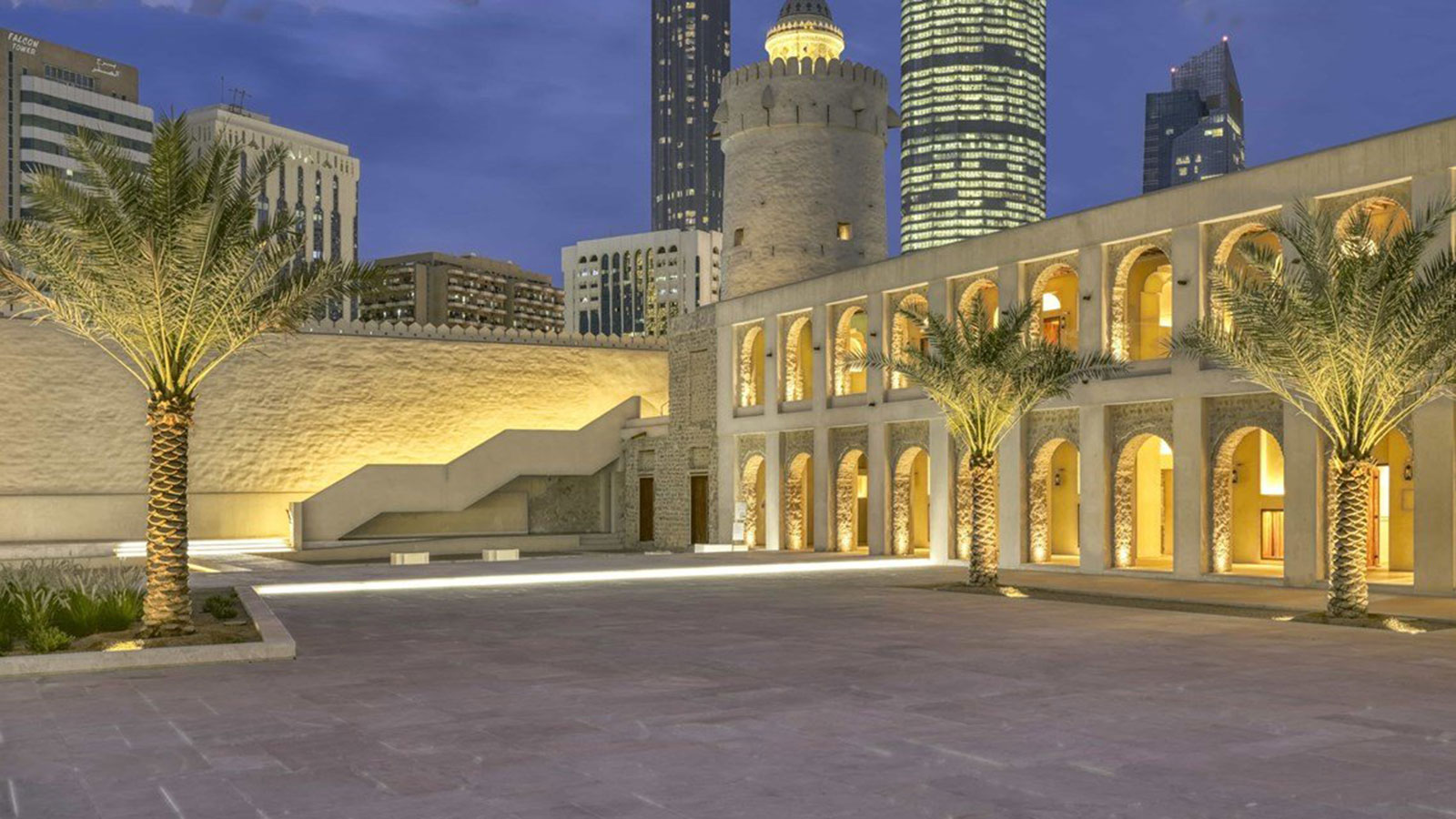Nestled in the heart of Abu Dhabi, Qasr Al Hosn stands as a testament to the rich history and cultural heritage of the United Arab Emirates. As the oldest stone building in the capital city, this majestic fort has witnessed the transformation of Abu Dhabi from a humble fishing village to a thriving metropolis. With its historical significance, architectural grandeur, and commitment to preserving Emirati traditions, Qasr Al Hosn has become an iconic landmark in the UAE.
Qasr Al Hosn, which translates to “White Palace,” dates back to the 18th century and served as the residence of the ruling Al Nahyan family. Originally built as a watchtower to protect the precious water sources in the area, the fort gradually expanded over time, symbolizing the growth and development of Abu Dhabi. Today, it stands as a symbol of Emirati pride and a symbol of the nation’s rich heritage.
This magnificent structure comprises two main buildings: the Inner Fort, constructed around 1761, and the Outer Palace, added in the early 20th century. The Inner Fort, made of coral stone and sea rock, reflects the traditional Arabian architecture of the time. Its thick walls, narrow windows, and towers with wind towers (known as “barjeels”) showcase the architectural techniques used to combat the desert heat while providing adequate ventilation.
The fort’s Outer Palace, a more recent addition, exhibits a blend of traditional and modern architectural elements. With its striking white façade, elegant archways, and ornamental details, it represents the evolving architectural styles influenced by the increasing contact between the UAE and the wider world. The juxtaposition of the Inner Fort and the Outer Palace exemplifies the historical journey of Abu Dhabi and the Emirati people.
Qasr Al Hosn has undergone extensive restoration and renovation in recent years to preserve its original features and showcase the nation’s heritage. The fort is now home to the Qasr Al Hosn Exhibition, which offers visitors a captivating journey through the UAE’s past, tracing the nation’s history from its Bedouin roots to its modern-day accomplishments. The exhibition showcases artifacts, photographs, interactive displays, and multimedia presentations, providing a comprehensive understanding of the UAE’s cultural and historical evolution.
In addition to the exhibition, Qasr Al Hosn hosts various cultural events and activities throughout the year, offering visitors a chance to engage with Emirati traditions and experience the vibrant local culture. From traditional performances and craft workshops to storytelling sessions and culinary experiences, the fort provides a platform for preserving and promoting Emirati customs and heritage.
Beyond its historical and cultural significance, Qasr Al Hosn serves as a reminder of the importance of forts in UAE history. Forts have played a vital role in the region’s defense, serving as strategic military outposts and guardians of precious resources. These structures served as centers of power, gathering places for the community, and symbols of strength and protection.
Today, the forts of the UAE are cherished and preserved as cultural landmarks, offering insights into the nation’s past. From the iconic Al Jahili Fort in Al Ain to the picturesque Fujairah Fort overlooking the Arabian Sea, these architectural marvels provide a glimpse into the UAE’s rich history and architectural heritage. Many forts have been transformed into museums, showcasing artifacts, exhibits, and interactive displays that transport visitors back in time and educate them about the nation’s heritage.
Qasr Al Hosn, with its grandeur, historical significance, and commitment to preserving Emirati traditions, stands as a testament to the UAE’s determination to honor its past while embracing the future. It serves as a cultural beacon, inviting locals and visitors alike to immerse themselves in the nation’s heritage and gain a deeper understanding of the roots from which modern UAE has grown. Qasr Al Hosn is a living testament to the UAE’s proud history, ensuring that the legacy of the Emirati people continues to thrive for generations to come.




